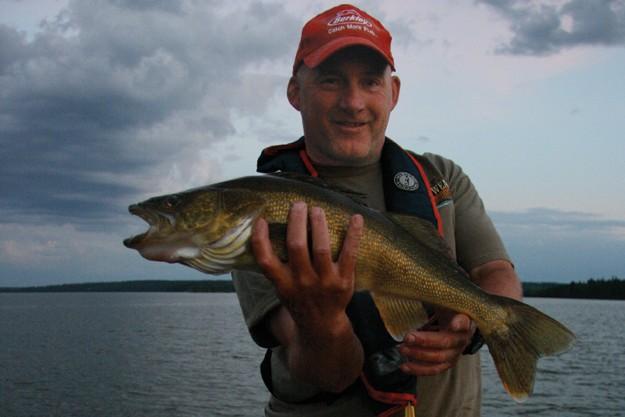Advertisement
Several years ago, some friends and I hooked a few walleye on topwater lures while night fishing for bass. We were so intrigued that we’ve since been targeting ’eyes with topwaters when conditions allow, making for a fun and effective change from traditional walleye tactics. And with this technique, you’ll almost certainly also get a mixed bag of bass, panfish and perhaps the odd muskie. Not only that, you’ll be surprised at the savagery of the strikes.
Timing: In order for you to catch walleye on the surface, the fish need to be holding near the surface. This means fishing the cooler waters of May, or heading out on evenings during the summer and on into the fall turnover. Because of the walleye’s light-sensitive eyes, the bulk of your topwater action will be after dark or on extremely overcast and choppy days.
Advertisement
Location: When walleye are shallow, they still like the safety of nearby deep water, so target shoals and bays near drop-offs or channels. If there are weeds and pronounced weed edges lining the area, all the better. Another good area, particularly on Shield lakes, is a steep rock face dropping into deep water. It’s often possible to hook fish after fish if a school of walleye is on the prowl. In rivers, meanwhile, they’ll move out of deeper holes and into shallow pools below rapids at night. Find a slick area of smooth water and the walleye will be there.
Lures: Frog imitations are dynamite on surface-feeding walleye. Many lakes have a late-fall frog migration, and the greenbacks will be waiting for them when they come. It seems odd fishing topwater lures close to shore in autumn, but it often works. Along with topwater frogs, poppers such as the Rebel Pop-R and disturbance lures such as the Jitterbug produce well when fished slowly. The main exception is during a large mayfly hatch, which, in my area of southern Ontario, usually takes place over mud-bottomed bays in mid- to late June. Walleye go where the food is, and they’ll gorge themselves on large mayflies when they’re available. This is your best opportunity to break out the fly tackle and enjoy some rare walleye dry-fly action.
Gear: Since most of your outings will be after dark, use the same precautions you would in any night-fishing endeavour. Navigate only in familiar water, carry all necessary safety gear, including a GPS unit, and leave your itinerary with someone. For nighttime tackle, nothing is better and more trouble-free than a good-quality spincast outfit; keep your casts short to maintain line control and enable better hooksets. Finally, bring a tangle-free rubber net and a headlamp or cap light.
Advertisement

